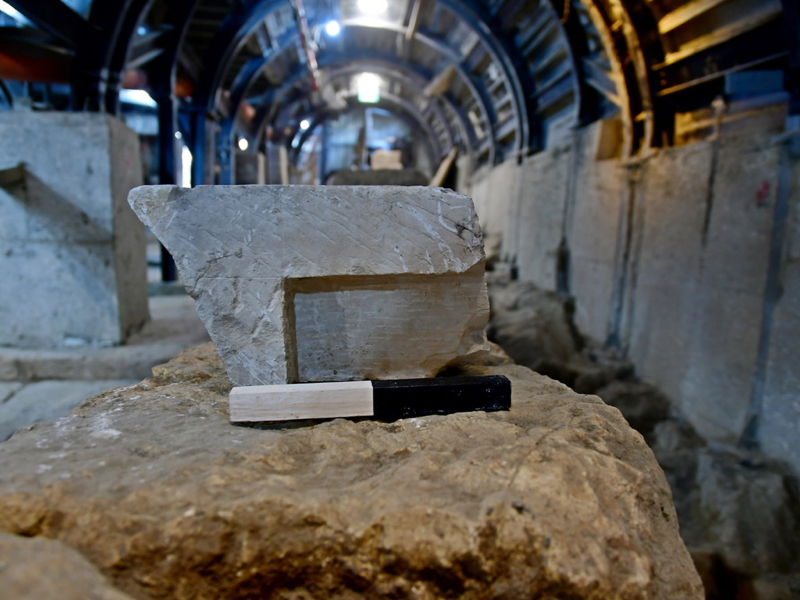A measuring table, possibly in use during the lifetime of Christ, has been discovered in Jerusalem during excavations of the "Pilgrims Road" area.
According to Professor Ronny Reich, who is currently researching the artefacts in question, these tables were used to calibrate measuring instruments for olive oil, wine and other precious liquids by using a common, stable standard measurement.
This measurement was provided by deep artificial cavities in the stone tables themselves. A hole at the bottom was plugged and unplugged, allowing containers below the table to be filled with exact amounts of liquid.
The tables were therefore crucial in establishing trust and common ground between traders, especially when cultural measurements might have differed significantly.
Reich notes that the discovery of such "standard of volumes" is rare, with only two other comparable objects being uncovered in previous archaeological digs.
In addition to the 2000-year-old table, dozens of measuring weights were also discovered in the same area.
Made of stone, they support the theory that this was the location of Jerusalem’s main market on the road to the temple 2000 years ago, in what was historically known as Jerusalem’s lower city.
Israel Antiquities Authority researchers have identified a large, open paved area dating back to the time of Christ along the street leading up to the Second Temple. They suggest that this served as the main square of the lower city and is where trade activity would have taken place in this part of the city.
As well as being a hub of commerce and trade, this area housed the "Agoranomos" – the officer in charge of supervising measurements and weights in Jerusalem – and his offices. This theory would go a long way to explaining the incidence of measurement devices and weights in such concentration.
According to Reich, more than 90 per cent of all stone weights of this type, totalling several hundreds, were found in archaeological excavations in early Jerusalem dating back to the Second Temple period. Due to this fact, they represent a phenomenon seemingly unique to Jerusalem in historic Palestine.



 Loading ...
Loading ...